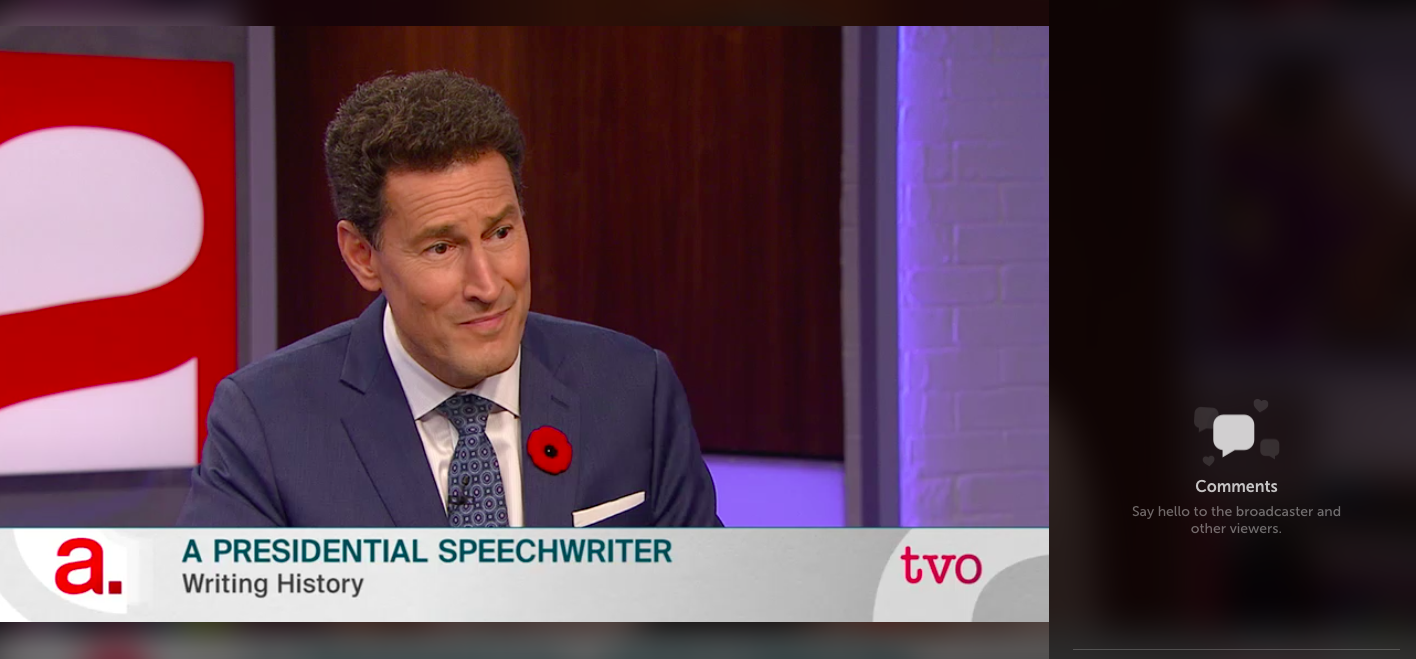Why Twitter is betting big on livestreaming video
The revolution will not be televised — but it might be livestreamed on Twitter, if the company bosses get their way.
The social media website is making a major push into livestreaming, with senior staff hoping that the live, unfiltered nature of Twitter is a good fit with live content embedded into the site itself. It’s an opportunity the company is trying to sell to Canadian media companies.
Peter Greenberger, the global head of news at Twitter, was in Toronto on Sept. 26, 2017 to attend #TwitterForNews, a gathering where news media organizations come to get updates on how they can work with Twitter, and, he added, put more news content on the social media platform.
“What we are ultimately trying to do is help partners grow their reach and their revenue on Twitter,” he explained. This strategy is one way Twitter is trying to retain and attract users. According to the Verge, Twitter did add 4 million users in the third quarter, though they lost users over the summer. Greenberger said they also see consistent growth among daily active users, which means people are logging in more frequently — something they believe is a result, in part, of livestreaming video.
In Canada, TVO, Global News, the Canadian Football League and MuchMusic have already entered Twitter partnerships to broadcast news and other events using Periscope Producer, a service that allows broadcaster to embed a tweet feed into the screen and use their own professional broadcast equipment.
In January 2017, John Ferri, vice-president of current affairs and documentaries at TVO, told the Toronto Star that TVO was broadcasting the Agenda with Steve Paikin on Twitter because they have “to be where audiences are.”
In the U.S., a number of media partners have premiered livestreamed content on Twitter, including the BuzzFeed morning show AM2DM, and NBC and the NFL, which broadcast Thursday night football games. Recode reported in September that Twitter secured enough ad funding to support all the livestreamed shows — including news shows — they had pitched.
Greenberger said that all this confirms that people turn to Twitter to find out what is happening in the world. “We saw a jump in tweet creation when we had the video in the app,” he said. “People want the content and the commentary in the same place and that will actually encourage more tweet consumption and creation.”
Jennifer Hollett, head of news at Twitter Canada, said that they saw the appetite for livestreaming particularly during breaking news events like Hurricane Harvey and Irma. “Use of live video, whether professional or just people pulling out their phones and going live, was incredible,” she said.
While it is true that protest movements and breaking news events have been galvanized by the ability to communicate on Twitter instantaneously, the platform’s total commitment to freedom of speech has allowed abuse to flourish. As chronicled by BuzzFeed reporter Charlie Warzel, many users have quit the platform after abuse got too bad.
Greenberger said responding to abuse and safety for users is a top priority, adding that muting and blocking is now easier to do. Hollett said you can also now get updates on any reports you make to staff. Twitter also recently released a schedule of measures it would take to combat abuse.
And then, of course, there is the question of what to do with Twitter’s most prominent daily active user.
Earlier this year, tweets made by President Donald Trump were considered a declaration of war by North Korea’s leadership. Many people called for the tweets to be deleted or for the President to be blocked by Twitter.
Greenberger sees it differently. “I think it’s an affirmation that never before been so important or relevant or influential in the global conversation,” he said. But what if that conversation leads to an actual war breaking out?
“I would say Twitter is a communications platform like many others,” he said. “It happens to be in real time and obviously widely distributed, and it has its unique attributes, but I don’t see how it differs from someone making a similar statement on the radio on television or through a letter.”
“The content, I think in this case, is separate from the medium.”
What Greenberger is focused on now is getting partners focused on using live video on Twitter. “We aim to be the first place people turn to find what’s happening,” he said. “We want to make sure that when they come they are finding Canadian news content at the top of their timeline.”
H.G. Watson was J-Source's managing editor from 2015 to 2018. She is a journalist based in Toronto. You can learn more about her at hgwatson.com.

